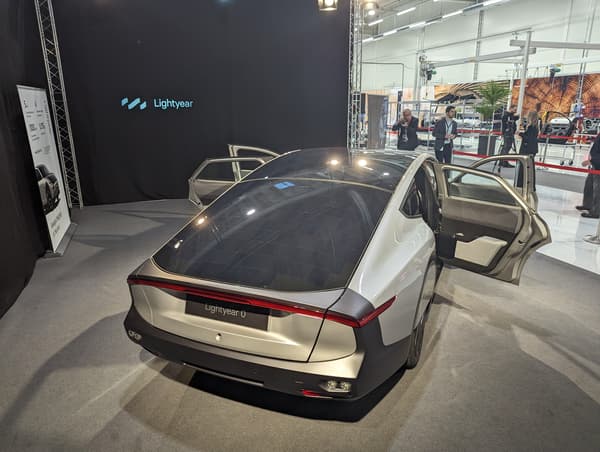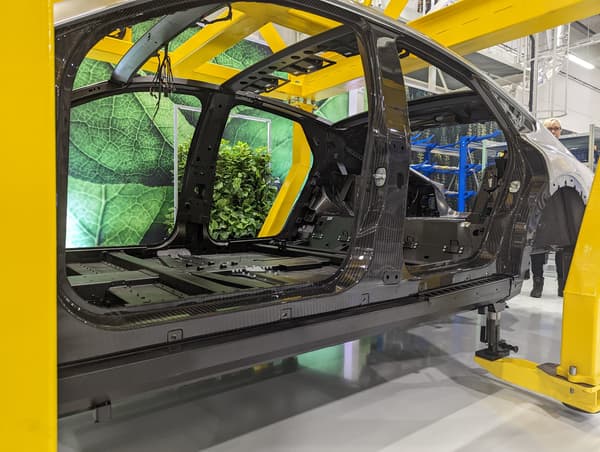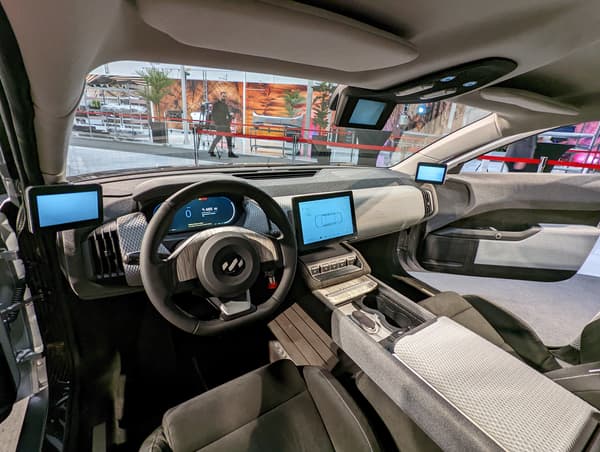It is a crucial step in its young history that Lightyear has just begun. This start-up founded in 2016 in the Netherlands has just started production of the first electric car powered by solar energy. The long-awaited continuation of the prototype presented in 2019 and which already gave the main lines of the project.
The alliance between a start-up and a historical player
Record development time, a few investors, and a pandemic later, we find one of the company’s founders, Lex Hoefsloot, this November 30, 2022 at a subcontractor’s factory in Finland. The CEO of Lightyear arrives on a stage set up in an old warehouse turned assembly line, where production of the Lightyear 0 has just started.
“Anyone can make a prototype, even on the road. But going through these stages to end up on a production line is the death valley for innovation. Especially when you want to offer a car focused and dedicated to solar technology, the risks they are even bigger,” said the young Lightyear co-founder, who 10 years earlier won a student competition in Australia with the University of Eindhoven and a car already covered in solar panels.

For this first production model, the choice ultimately fell on the factory of a Finnish automotive supplier, Valmet Automotive, in the city of Uusikaupunki, a 3-hour drive from Helsinki. A relatively unknown actor, but who will be able to contribute his experience of almost 50 years in assembling cars for brands such as Porsche or Mercedes. Currently, the A-Class of the star brand leaves the factory, which also produced a certain Fisker Karma, the first rechargeable hybrid test by Henrik Fisker.
Valmet recently partnered with Chinese battery giant CATL and began producing batteries partly for use in cars. Important precision Also, if they would be “made in Europe”, Lex Hoefsloot assured us, Lightyear does not yet specify the origin of its batteries and if there would be a link to this association of its subcontractor.

The assembly line looks more like a large manufacturing workshop, with almost cartoonish elements for a company that fully claims to want to “save the world”, or at least prevent it from sinking into climate hell, with its “eco-responsible” cars. “. . In a pristine white setting, quite classic now in modern factories, green plants sit enthroned in front of large billboards evoking nature with slogans promising “a zero-emissions future.”
From a prototype car to a mass-produced real model
First goal: produce one Lightyear 0 per week, before ramping up a bit more. But at 250,000 euros per unit, this vehicle should be seen above all as a demonstrator of the technologies that the start-up can offer. With the ambition to offer a Lightyear 2 (the prototype of the 0 had already taken the number “One”), from 30,000 euros in 2025. A great difference that may bring to mind the initial project of Elon Musk at Tesla, for whom success with the top-of-the-line models, the Model S and Model X, should eventually make it possible to offer a much more affordable vehicle: the Model 3.
“The Lightyear 2 will be a family car, not a city car, the main car of a household with potential interest in markets where charging infrastructure is lacking,” Lex Hoefsloot told us.

Lightyear’s major technological feat, these solar panels cover a total area of 5 square meters, from the rear to the front of the vehicle. Enough to recover 20 kilometers of autonomy remaining parked for two hours and up to 70 kilometers a day.
“Depending on the weather, you can recover between 6,000 and 11,000 kilometers of free, effortless and clean autonomy every year,” sums up the start-up.
In addition to this power source from the sky, Lightyear also wants to make its vehicle a model of efficiency, which also explains its very high cost. For once, it’s not (only) because of the battery: it only has a capacity of 60 kWh, relatively limited for a large road car. But this saves weight and therefore in a certain way autonomy.

Lightyear engineers have also sought to save the smallest gram, adopting a carbon structure and an aluminum chassis. In the end, the weight of 1,575 tons is still quite low for a vehicle of this size.
Even the front daytime running lights are not covered with glass. “The choice had to be made between losing aerodynamics and adding a weight-adding element,” explains Patrick Creevey, product manager, who previously worked for Jaguar Land Rover. He is still in awe of the vehicle’s design time compared to what is traditionally done in the car.
Efficiency, more than performance
Aerodynamics is also another essential building block for Lightyear. With a Cx, the air penetration index, of 0.1775, a record in automobile production. Finally, the 0 can count on motors on all four wheels, connected to a battery management system, which makes it one of the most efficient vehicles on the roads, with energy losses limited to the maximum.
Performances are then deliberately unimpressive, with 0 to 100 km/h, for example, done in 10 seconds, or 4 more than the less efficient Model 3. But the key is record consumption: Lightyear evokes an incredible 10.5 kWh per 100 km at a stabilized speed of 100 km/h. If we consider driving more than 600 km on a single charge in this way, the sun can also provide a surplus of energy during the rolling phases.

There remains the question of the more classic recharging, without necessarily depending on the sun’s rays. If the latter can provide 10 km of autonomy per hour, nothing to really count on for a long trip. Luckily we can plug in 0, but here again we’re staying somewhat sparing, with a maximum of 50 kW of charging power, or around an hour for a nearly full charge.
Here again, a certain counterpoint to the current superiority in this area. Tesla, for example, offers five times more power, at 250 kW, in its latest V3 superchargers.
Lightyear’s promise of a truly eco-friendly car seems to be hitting the mark in any case, with 150 reservations now to be met by the neo-industrial-turned-start-up. What so quickly accumulates experience and production volumes that allow you to offer your Lightyear 2, or the future solar car for everyone.
Source: BFM TV

